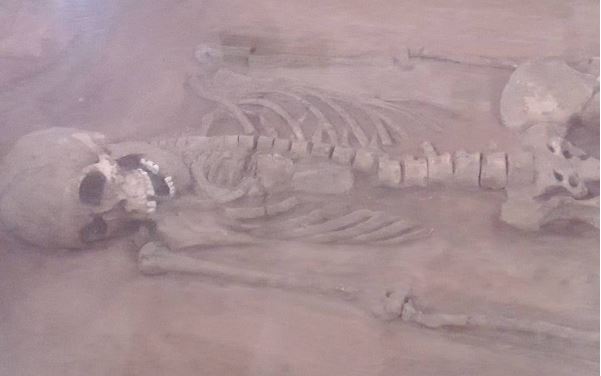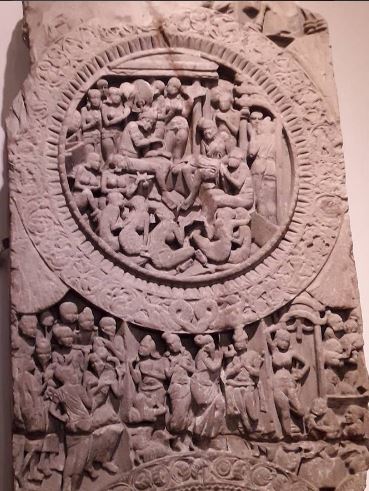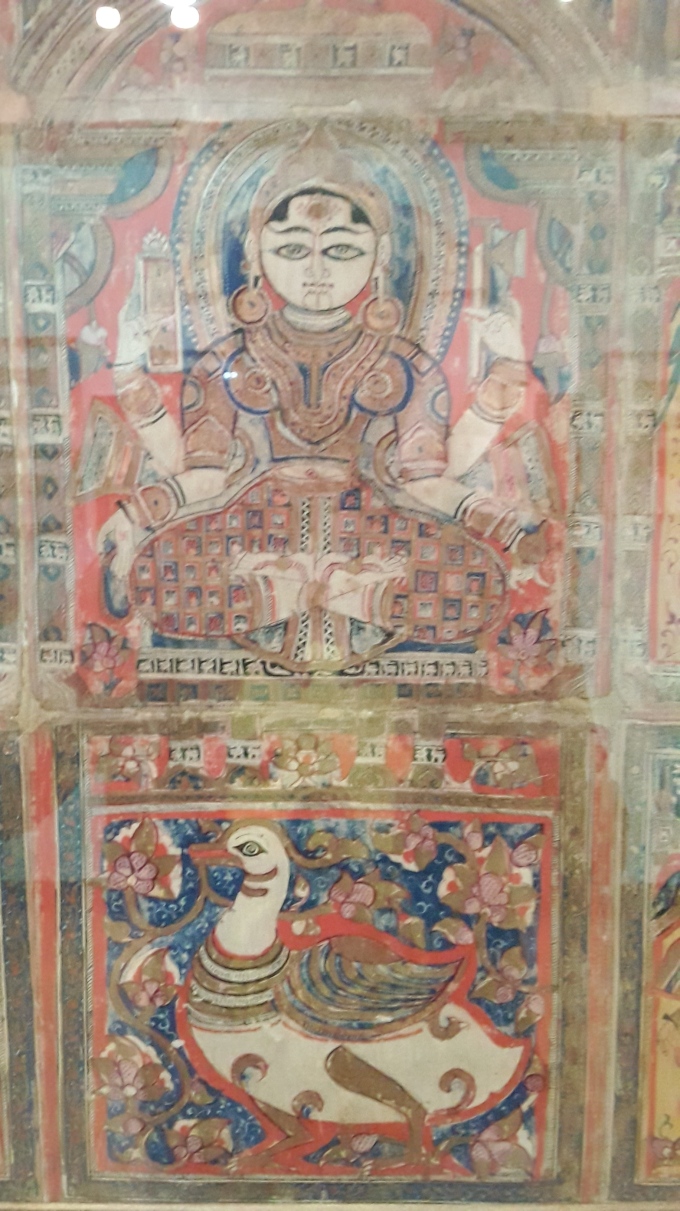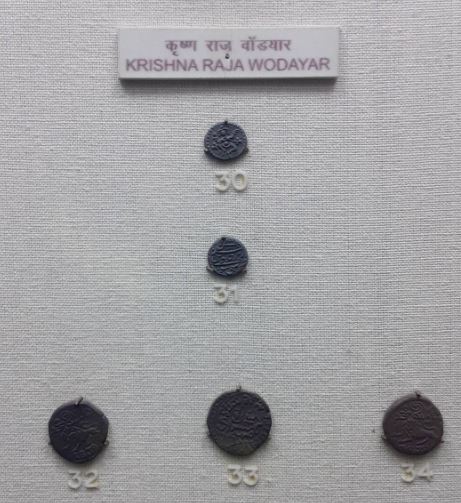For a moment I thought I had missed my flight. This shattered me. Fortunately, I was just in time for collecting the boarding pass. I ran to the security queue and stood in line. Just fifteen minutes were left for final call.
‘Boli maga’, I cursed the taxi driver in Kannada under my breath for having delayed the pickup by 45 minutes. Simultaneously, I thanked the kind lady at the Indigo desk for handing me the boarding pass within two minutes. I prayed to the lord to make it happen without further problems. Fortunately, I made it to the Indigo pickup bus just ten minutes before the stipulated time (4.40 am). Phew!
Morning flights are the best. The sight of gorgeous alto-cumulus clouds and the sunrise is indeed a treat to one’s eyes. I read Huxley’s ‘Brave New World’ for a while and then slept. This was my second trip to Delhi. The last one was in the year 2006 when I went for a trek in Himachal along with a group. I had not got an opportunity to roam around Delhi as it was just a pick up and drop point for the trek organizers.
Two and a half hours later, I landed in the domestic airport of Delhi and took a cab to Zostel Delhi. The drive from airport to Connaught place area threw some good vibes in the morning. I dropped my bag and headed straight to the first destination in my plan i.e. The National Museum. In order to save time, I bought a Delhi Metro smart card. This would also serve as a souvenir, I reasoned. Considering the heavy rush, I mentally noted that Delhi Metro is just a refined version of Mumbai local train network.

It is a ten minute walk from the central secretariat metro station. On the way to the museum, I saw many citadels of bureaucracy and remembered the House of Cards quote by Frank Underwood.
“Such a waste of talent. He chose money over power. In this town, a mistake nearly everyone makes. Money is the Mc- mansion in Sarasota that starts falling apart after 10 years. Power is the old stone building that stands for centuries. I cannot respect someone who doesn’t see the difference.” (Second episode , first season)
These were old stone buildings indeed. The National Museum stood right opposite to the Ministry of External Affairs. Fortunately, I had come to the museum at the right time. A free guided tour was happening at 10.30 am. I bought my tickets at 10.25 and waited.
“Yeh Hindi guided tour hai. English wala guided tour 12.00 pe shuru hota hain. Aap ko Hindi Theek hai?”, she asked the crowd of six to seven people . “Haan theek hain ,” I mumbled in my not so perfect Hindi.
A Malayali family that included a mom, two kids and a father and a Telugu family that included a grandma, three kids, a mother and a half bald man was also waiting for the guided tour. The guide’s Hindi was melodious. She took us to the corridor and briefly explained the history of the museum. Apparently most of these artifacts were in Rashtrapati Bhavan. Later they were moved to the newly build museum in 1960s and inaugurated by Pandit Nehru.
We entered the section with exhibits from Harappa civilisation after the introduction. The guide informed us the location and time period of the Indus Valley civilisation with the help of a map. I recalled my Gujarat trip when she mentioned the word ‘Dholavira’. The Malayali lady and her kids were disappointed when she heard that some important sites had gone to Pakistan after partition. Next we moved on to the exhibit of Indus Valley Stamps. The guide, in her flawless Hindi informed us that the Indus Valley script was yet to be deciphered. The famous ‘Dancing Girl’ artifact was put up for display. The guide explained us the process of lost wax method of making the statue.
We saw the corpse of a lady in the middle of the room. Fortunately, her bangles and jewelry were still intact. Otherwise, it would have been difficult to identify her sex. ‘ Yeh log punarjanm ko maante the’ , explained our guide as she explained about the burial practices of the civilization.

This was followed by the section that contained exhibits from the Maurya, Gupta and Shunga dynasties.She gave a very detailed explanation about the national emblem that is derived from the Asoka Pillar. Several reliefs from these ages were on display. She narrated the story of the Buddha that were depicted on these stupa reliefs.

Moving on, we browsed through several stone sculptures that were accompanied by descriptions and narratives from our guide. It was almost impossible to note down whatever she said because of the pace of the guided tour. I still managed to Instagram some interesting pieces. While doing so, I was not at all violating the museum rules as it these people were perfectly OK with photography.
This was followed by a quick stroll in the bronze artifact section. “Yeh Sab South Ka Bronze Items hain”, said the guide. It was quite evident that south Indian history was not her forte. Of course, she was very good with her narration about Indus civilization and north Indian dynasties. One of the Ganesh bronze idol from Vijayanagara dynasty was my personal favorite.

Next, we entered the section where some Mughal and Pahadi paintings were on display. I loved most of the Pahadi paintings. She also described on of the Mughal paintings in great detail and informed us that artists started signing their works during this period. Her explanation of a Jain painting of Saraswati was particularly interesting. She mentioned that the goddess in their painting was not sitting on top of the swan as they were very sensitive towards animals as well. She chuckled at her own sarcastic remark.
The Malayali lady nodded her head in agreement and egged her kids to remember all these things. “You will be studying all this in the class my kids” she reminded them from time to time. I chuckled at this and thanked my mom for not forcing me to study too much.
Some of the Buddhist monuments preceded this section. The guide mentioned that followers of Buddhism considered this section as a shrine unlike non- Buddhist visitors for whom it is just another part of the museum. Sacred relics of the Buddha, from a stupa built by Emperor Ashoka in the 3rd century BCE were also on display. We were told that Buddhists come to pray in this area.
This was followed by a tour of coins and currency section in the first floor. The guide provided a brief history of the barter system and addressed the kids from time to time. She donned the role of a high school teacher. By now, the half bald Telgu man was tired of history. He just sat on the chairs while his old mother/ mother in law continued to listen with great enthusiasm. The Malayali lady’s enthusiasm had not died even after an hour of history. Her husband seemed to appear attentive, mostly to avoid his strict wife’s censure. Some renovation works were in progress. The first floor also had a special exhibition about a Swiss researcher named Alice Boner. The group did go to this place, but I did after our guided tour was over.

We went to the costumes and textiles section and later moved to the tribal lifestyle exhibits. Finally we scanned through the arms and armour section. The Malayali kid was enthusiastic to see Tipu Sultan’s sword. The guide’s explanation of the arms with dramatic actions and details of its use made it appear more realistic. Aurangzeb’s battle Armour was also on display. I was also surprised to know that the shields were made of Rhino hide and not metal. We wrapped up the tour in two hours after going through the musical instruments section. We dispersed after thanking the guide. I went around the place again for my own satisfaction.
I was lucky again when I entered the Alice Boner special exhibition around 1.30 or so. That’s because another guided tour was happening at this place. I found that Alice Boner was a fascinating personality. She was a painter, historian and Indologist. She conducted research about Indian temples and the possible usage of mathematics in India’s temple building history. For this, she sought support of local scholars like Pandit Sadashiva Rath Sharma who introduced her to a manuscript called Shilpa Prakasha. She was from a wealthy Swiss household and funded Indian artists like Uday Shankar. Excerpts from her letters and biography indicate that she developed feelings for some of the artists she funded. Her personal life was in turmoil for most of her life. This turmoil has come out in her vivid paintings of Kali. She was also honoured by the Indian government with a Padma Bhushan in 1974 for her research on our culture and being an ambassador of Indian Heritage abroad. The photographs of the same were displayed at the end of the display. By the end of the tour, I was convinced that Alice had made good use of her fortune and led an interesting life.
I must confess that I spent close to four hours in the National Museum. By the time I came out, I was hungry. I realised that I had missed breakfast. I went to one of the chai stalls in front of Udyog Bhavan and ate two samosas with green spicy chutney. Yummy stuff. The tour had begun on the right note. I headed towards the Central Secretariat Metro Station to move towards my next destination: Qutub Minar Complex.
Leave a comment